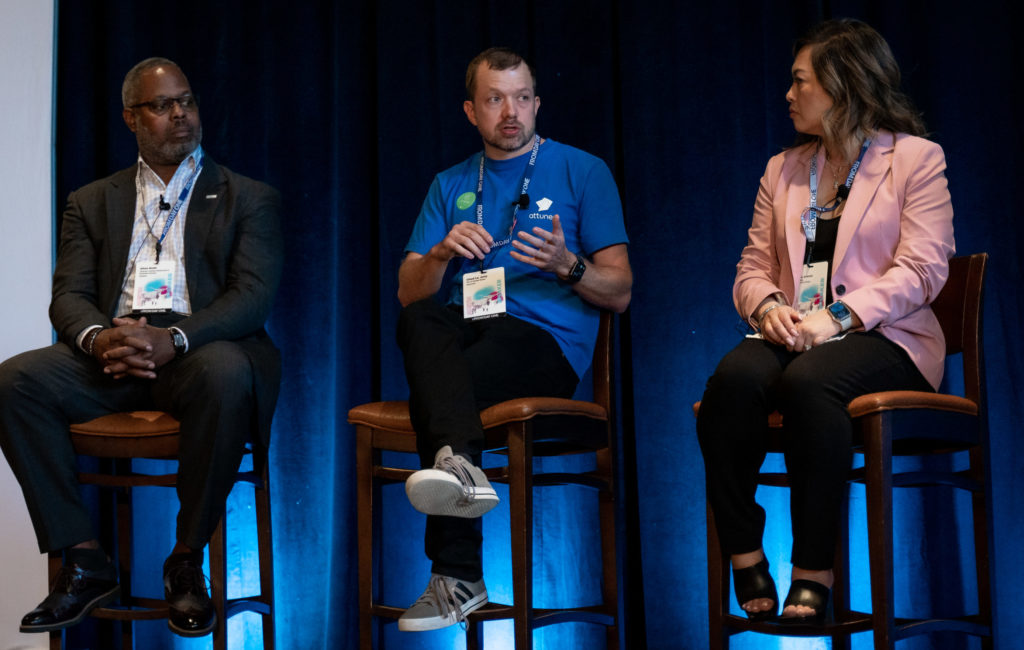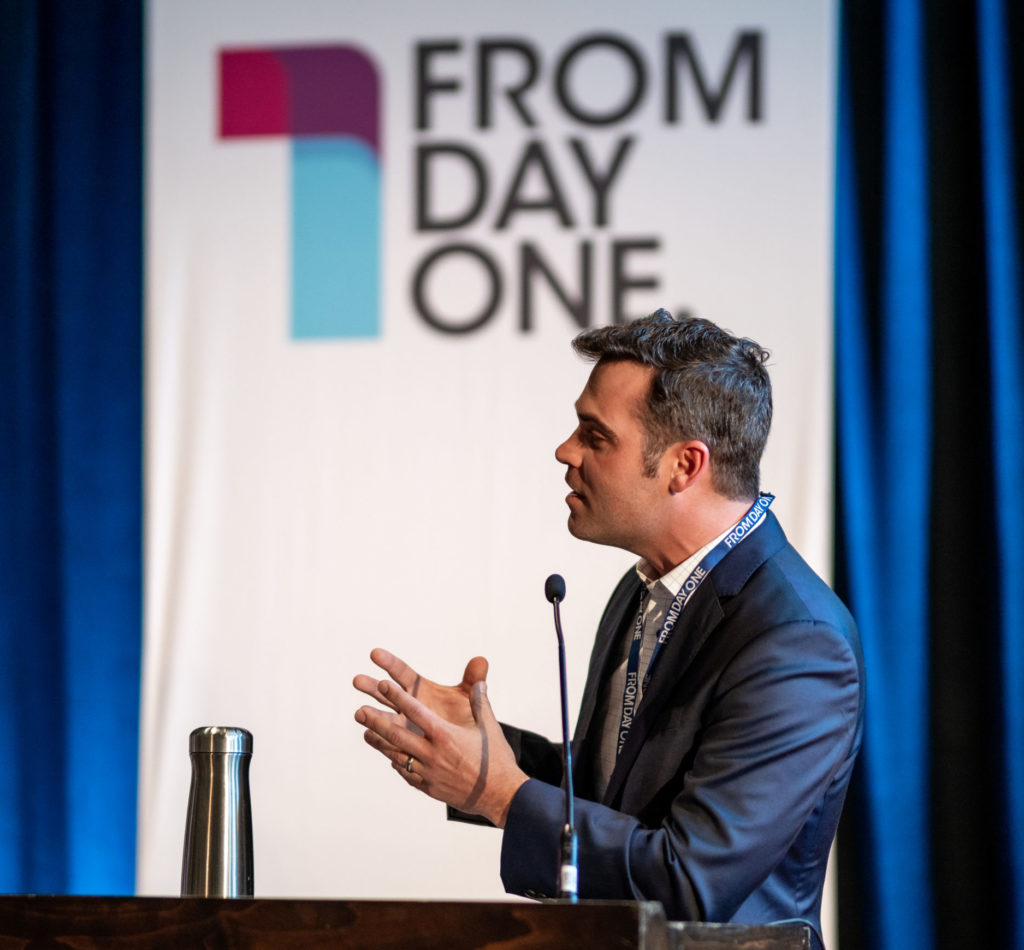Rebalancing the Relationship Between Workers and Employers


Alton Scott has jarring news for employers: they’re losing their grip. As the labor and talent shortage has widened since the start of the pandemic, there’s been a growing imbalance between the workforce and the companies that now direly need their services.
“As we continue with this war for talent, I don’t know that we’re winning. And if we are, it’s not by much,” said Scott, a director and HR business partner at Sodexo, a food-service giant with more than 400,000 employees. “As employers, we got to make sure we’re offering the right pay, the right benefits, the right culture, the right engagement–and that we have diversity, inclusion and belonging.”
Despite high-profile layoffs in the tech industry, most employers still have too many vacant roles and not enough candidates to fill them. It’s a reality that’s shifted the employer-to-worker dynamic, and Chinyere “ChiChi” Anyanwu, director of organizational development and culture at San Antonio-based CPS Energy, said it has helped amplify employees’ voices. “People have more choices, and I think they’re going to use that choice to work with their employers to say, ‘This is what I want. How are you going to make it happen?’”
Scott and Anyanwu were among the speakers in a panel discussion on “Rebalancing the Relationship Between Workers and Employers,” part of From Day One’s Austin conference in October. The panel, moderated by Tom Miller, who anchors KXAN News Today, addressed a range of topics revolving around ways employers can offer more purpose-driven work experiences, foster a healthier work-life balance, and attract and retain talent. Among the highlights:
Connecting With Employees Outside Their Roles
As remote and hybrid work has matched workers’ longing for flexibility, Kim Colbeck, the VP of HR at Maximus, which provides health and human-services programs for governments, said it’s important for companies to offer the right incentives and a clear pathway for career advancement. “I don’t think employers will be in the driving seat in 2023,” Colbeck predicted. “We still have a labor shortage, and we don’t have the workers that we need with the skills that we need.”
Colbeck said the more companies focus on the short and long-term aspirations of their employees, the greater chance the workers will dedicate themselves to the brand or business. “The more that companies connect with what’s really important to people, the more they’re going to want to stay there,” she said. “Employees want their company to care about the same things they do.”
Embrace Their Motivations
Too often companies rely on the extrinsic opportunities of a role. On a job application, in an interview or offer letter, employers flash what salary, health care options or vacation time a role offers instead of the intrinsic, or self-directed or rewarding, goals that could be achieved.
“I think what people want is to understand why they get out of bed every morning and do the job, and they want more of that,” said Chad Lafferty, VP of global sales at Attuned, which helps employers understand what motivates their workers. “And they want their employers to hone more on that, and find ways to motivate them that aren’t those traditional carrot-and-stick ideals.”

Tran Andrada, a presales manager at HiBob, an HR information-system platform, said this evolution has come with the generational shift of job seekers. Rather than focusing squarely on financial compensation, she described a new legion of professionals that are drawn to roles that fuel their desire for personal development and growth. “What they want is to find meaningful work and to feel significant,” Andrada said. “That’s a big generational shift, so having the resources and the tools to support and track what their career aspirations are, those conversations have changed dramatically.”
Remote Work Has Strengthened Relationships and Insights
In her role at HiBob, Andrada said the switch to remote work has given her a better sense of the resources her employees need to thrive and, at times, a glimpse into their lifestyles. “We ended up creating better relationships because you got to see people’s pets, we got to see people’s children, we got to see some of the other things they’re engaged in that has become part of their daily life,” Andrada said. “So that gave me, as a leader, insights into the unique needs of each of our employees. I think that’s helped.”
While remote work has certainly increased employees’ mobility, it has been a source of burnout for many in virtual workspaces. In her experience in technology work, Andrada said it’s common for high performers to work outside their office hours to respond to emails and phone calls. In those moments, she said, it’s the responsibility of leaders to encourage their employees step away from the tech that tethers them to their roles. “When you say out-of-office, that means out-of-office,” Andrada said. “Don’t respond, because once you respond, you’re opening up the door. And as a leader, you have to do that first. No means no.”
Instead of placing the blame on the technology, Anyanwu said it’s the duty of the employer to designate work hours. “We have to stop blaming technology for everything,” she said. “It’s behavior. Technology is there to help our life. Just because we have it doesn’t mean we’re going to do anything, it’s what we do to it.”
Turnover Is Two-Fold
As time goes by in corporate life, it’s common for the names, faces, and roles of a company to change. But Lafferty said turnover is also an indicator of where a company is headed and what issues, whether structural or cultural, need to be addressed.

“A company has to ask itself, ‘Why are people leaving and where are they going and what are they doing?’ If they’re moving to another job or another position you could’ve provided for them, then you’ve missed an opportunity and thrown cash out the window,” Lafferty said. “You have to take a step back and ask if you’ve provided that person the right tools, the right training and found ways to motivate them. Otherwise, it’s a disconnect you have to deal with.”
Not every relationship is worth salvaging. If an employee is leaving for money, both Scott and Lafferty agreed that counter-offers aren’t often the best option. For Anyanwu, turnover is a part of the flow of a company and should be embraced. “People are going to move. But as people move, others are going to come in,” she said. “You can’t hold on so tightly to what you know. The next best thing could be coming in. Prepare, so that it’s not costing you so much money each time you have to onboard somebody.”
Earl Hopkins is a culture reporter for the Austin American-Statesman. He’s also a freelance music writer whose words can be found in Complex, MTV News, GRAMMY.com, Stereogum, UPROXX, and other publications.
The From Day One Newsletter is a monthly roundup of articles, features, and editorials on innovative ways for companies to forge stronger relationships with their employees, customers, and communities.